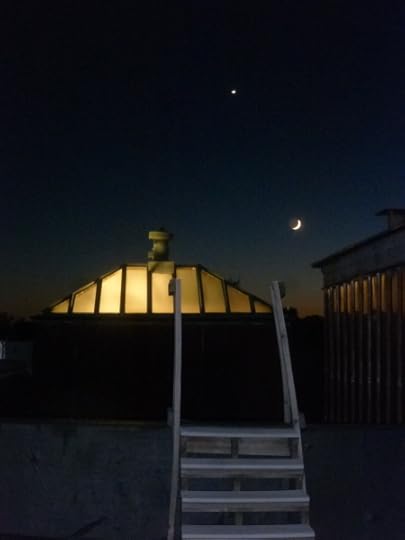Greer Gilman's Blog, page 22
June 16, 2018
Up the ladder and down the wall
June 13, 2018
Gaudy Night: Three
After breakfast on Sunday, I ran into my labyrinther and one of her classmates in the drawing room of Tower Court, and we talked about the comparative rituals of the Seven Sisters: hoop-rollings and tree-plantings and frolickings with garlands. Here's A Midsummer Night's Dream at Wellesley in 1893. Puck would later live with Vida Dutton Scudder, for whom my fellowship was named.
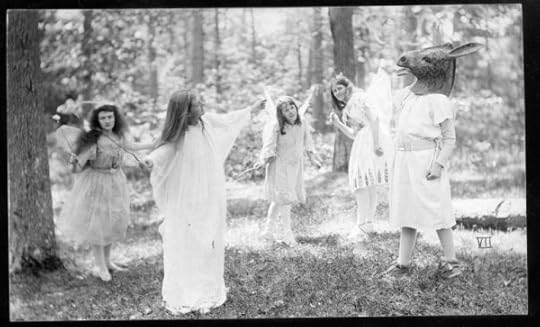
We agreed that Bryn Mawr’s lanterns are the best. And a passing classmate of mine, a classicist, recalled how every year, Mary Lefkowitz would ritually immerse herself in the lake at dawn to restore her virginity.
Then we marched. Class by returning class, by long custom, we line up, all the way back to the chapel, half a mile of educated women, and then reel off as in Oranges and Lemons, with the oldest walking through the cheering ranks of the younger classes, who in turn become the elders of still younger women. Every time, I think, this is silly, and I end up being moved.
Back when I began, the oldest classes in attendance were the suffragists: 1913, 1908, with scatterings even of 1903. I span a century. For decades, we saw the comet-like quinquennial return of Kathryn Wasserman Davis (1928), who missed her 85th reunion by just weeks.
The oldest and less able are transported in high style.
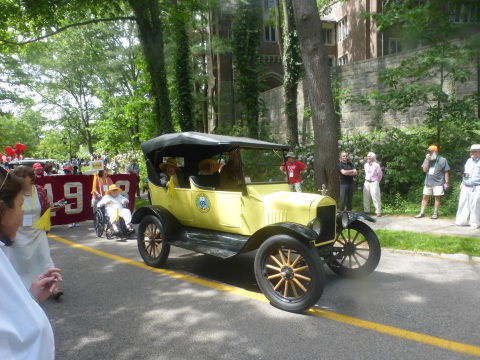
1948: still on its pins and out in force.
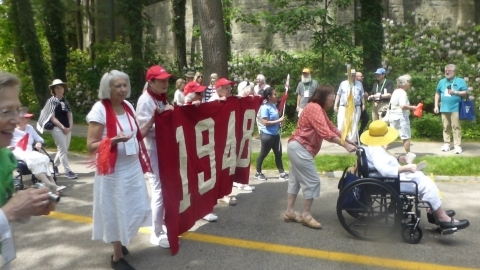
Purple pussy hats! The best regalia ever! 1-9-5-8, rah!

Awaiting our cue.
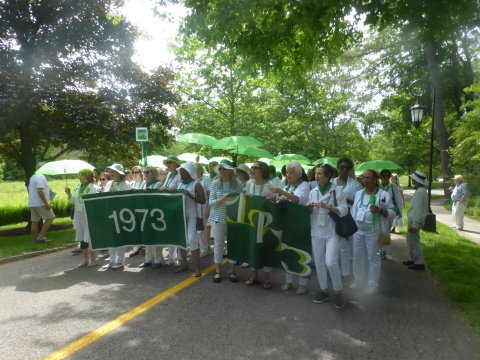
Shoulder to shoulder, and friend to friend
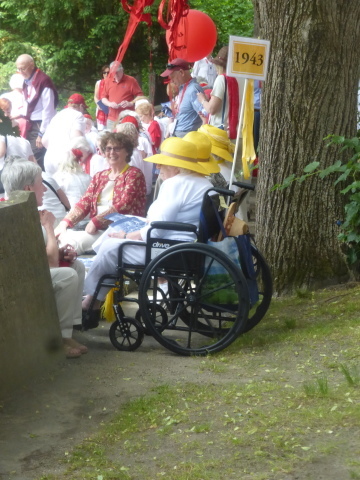

Nine
Gaudy Night: Two
Breakfasts (infinitely nicer than they were in our day) were in the most august of halls, consumed in Gothic majesty, and in the uproar of assertive women's voices. It sounded like a tin aviary. Future scholars?
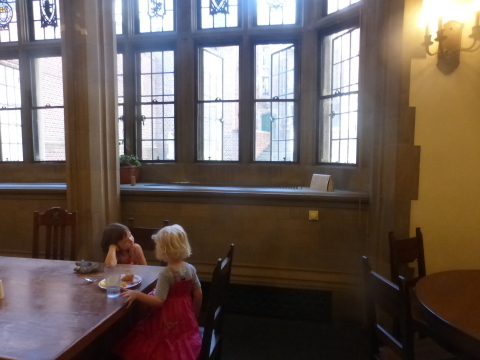
On the stairs, I passed both a kindly notice from the Buddhist chaplain, and a tribute to the founder of our Russian department.
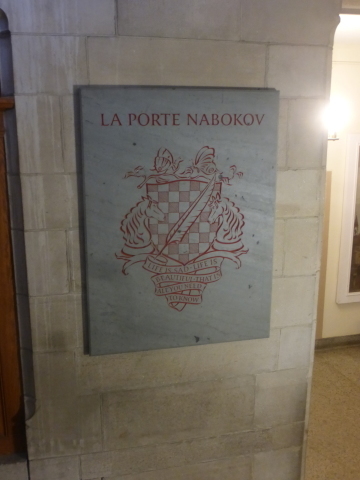
Chipmunks everywhere!
Thanks to the great Kathryn Wasserman Davis—philanthropist, scholar, champion of our green earth, of peace, of women's rights—the college since my time has built a fabulous museum, full of divers unexpected artworks arranged as colloquia. It's brilliantly curated. I revisited one of my new touchstones, the "Sea-Sculpture." Here lie the fused and shattered fragments of a cargo of china, twice-transformed, by fire and water. The spine of what creature?
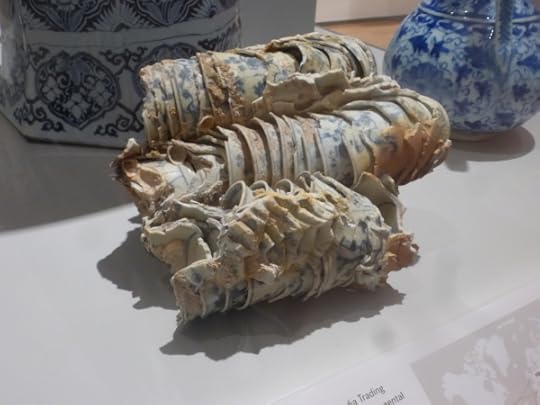
There were two special exhibits, one of fierce activist art, the other, tender portraits of Butch Heroes.
Heard another good lecture, this time on Mary Cassatt as feminist. That guy's class is going on a field trip to Paris, lucky devils. I tell you, I could go on going to college forever—were it not I had bad dreams. The kind where you're taking an exam and you've haven't studied for it, or even taken the course, and anyway the questions are all in Linear B ... And then you wake up, and you haven't studied. But I loved my Chaucer course, for which I wrote a Canterbury tale; my Shakespeare, my early Netherlandish painting. And even genetics, even microbiology at MIT were exhilarating, in a sort of hanging-by-your-nails-from-a-North-Face-in-Nepal kind of way.
Then came—O my!—the most wonderful discovery of all.
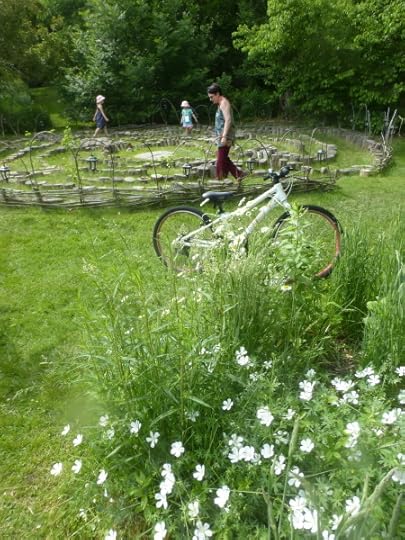
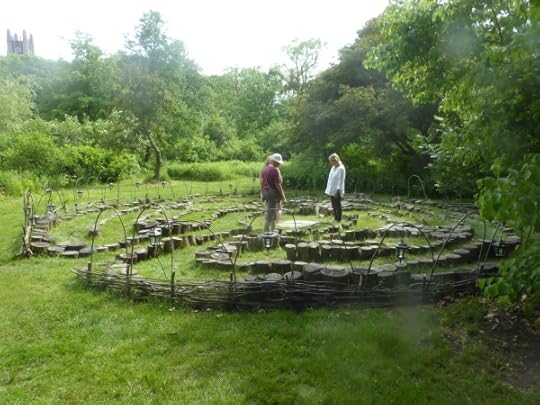
There's a labyrinth now. I am ecstatic.
Just up that sunny little path is my old dorm—they've coiled this by the trees where I used to read.

It lies just north of Paramecium Pond, which has gone wilder. The meadow I remember now is glades and woods. The brook is still there.
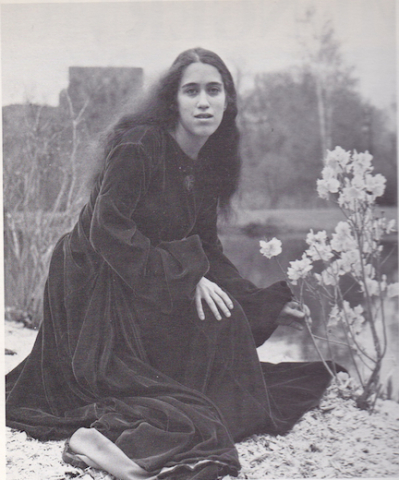

Look at "the interlaced arches of its low looped fence." Was that allusion to Nabokov conscious? I love the eddering. And those lanterns are solar: you could walk this by night.
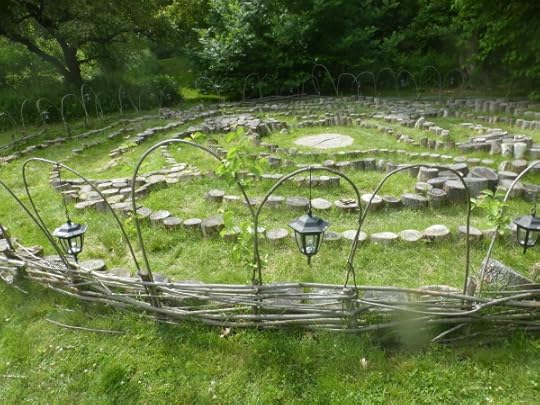
The withies they interwove as dead, sprang up this year, still green.
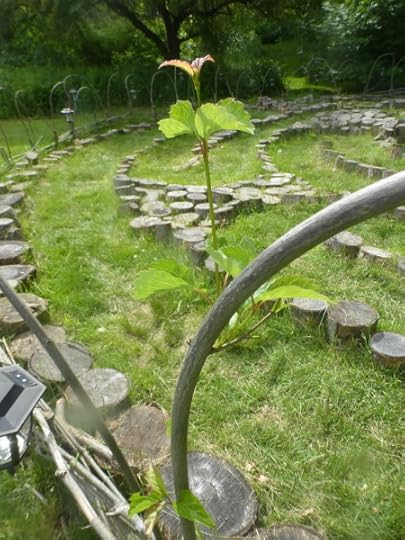
Offerings are left.

I had a lovely long conversation with one of the students who designed and built it.
Our gaudy dinner (excellent catering and wine specially donated by a class member with both taste and money) ended with a glorious surprise: an elegant re-invention of our favorite dessert. We got peppermint-stick sundae pie (Bailey's ice cream and Bailey's hot fudge in a graham cracker shell) on state occasions, and the dragonish kitchen ladies guarded it like gold: no seconds! Not even if you came round again in a mustache. If we meet five years from now, gods willing, I want pompadour pudding. That was a crème-brûlée-like custard in a little cobalt-blue ramekin, but topped with a chocolate souffle instead of burnt sugar. Cloud not cat-ice.
Hey, I was a question in the trivia contest! What proto-fantasist worked on our Junior Show?** No one got the answer, of course. But it got asked, along with the lyrics to “Sweet Baby James,” a whole category, Blondes of Watergate, and the minutiae of the antique, then shockingly advanced, parietal rules. A girl could have a “caller” in her room, if he was announced (“in this cawnuh, the Lowell House Lothario”): but three feet on the floor at all times, ladies and gents, and the door to be open by the width of a wastebasket. How does that Kama Suit-ya? I was shocked when a contestant missed “What is a Boston marriage, and what dorm here is named for a practitioner?” Bates, of course; for Katherine Lee Bates, author of “America the Beautiful,” whose life partner was Katharine Coman. In 1910, when a colleague sniffed at “free-flying spinsters” as “fringe on the garment of life,” Bates retorted: “I always thought the fringe had the best of it. I don't think I mind not being woven in.”
Nine
**Give Us Back Our Lily-Pad; or, Did Your Brother Go to Wellesley? A friend from the show still has her “Seaweed is Sexy” button. What I remember best is turning out a tour-de-force speech pun-running through most of the faculty’s names: “But hark! What light through Onder window donks?” Note the infix. I was Nine even then. And our litany of future hippy slang: “Right on!” “Left off!” “Outta state!” “Far east!” “Hot tuna!”
9
Gaudy Night: One
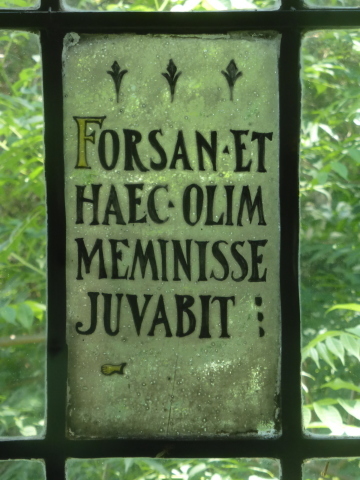
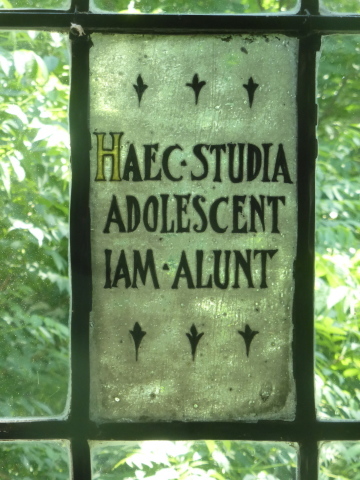
Splendid women, doing splendid work, right down the classes: strong, smart, funny, nurturing, collaborative, activist, diverse. Weird, not so much.
They put our returning lot in the furthest west and prettiest of all the dorms (I’ve always thought), with its lovely little open-timbered mediaeval hall and its Alice-themed minstrels’ gallery.
=
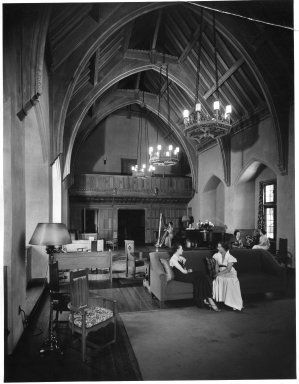
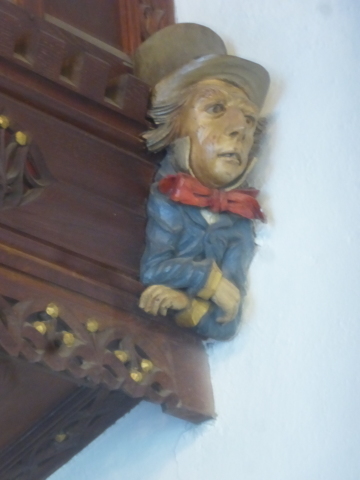
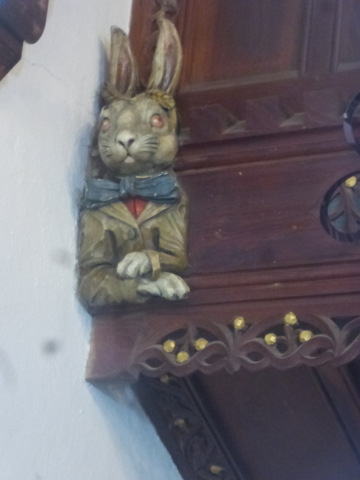
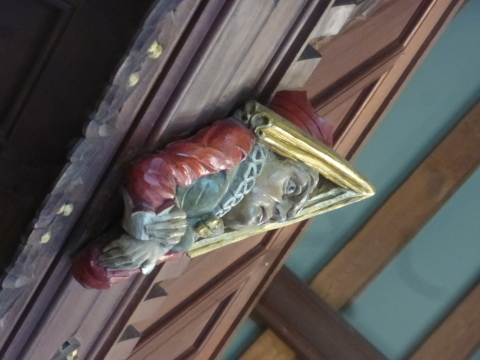
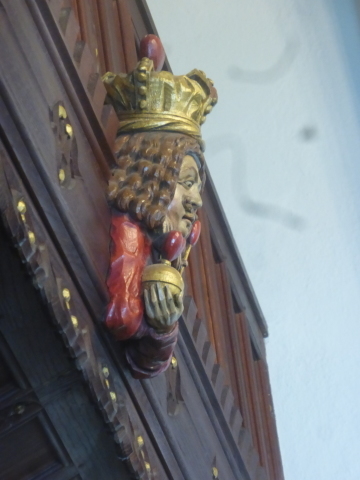
After all these years, I find I still look at dorm rooms with an acquisitive eye: not, you call this a hotel? but oh nice! a corner single. Willow-green-grey walls. Good desk, good bookcase, big closet. Two radiators. Rock-hard mattress, still, better than saggy. Wouldn’t mind drawing this number in the lottery. I was in the old servants’ quarters, so no frills. But such a view!

The basement of Claflin is now the site of the college bakery, so before the dawn, one’s dreams are pervaded with the scent of palmiers and croissants, rising like a mist. It was flawless June weather all weekend.
Friday
The Severance oak, thank goddesses, stands. I used to walk up that steep hill and drop through PT’s window to play Praetorius haltingly on my recorder.
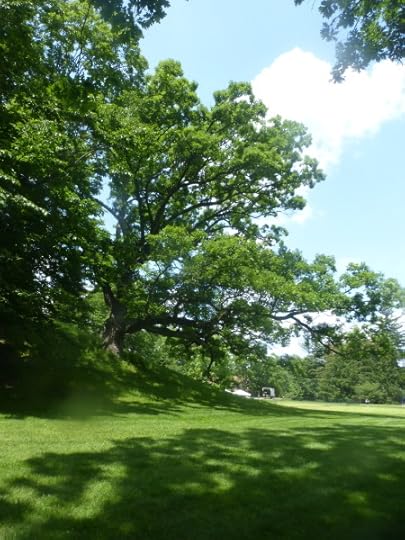
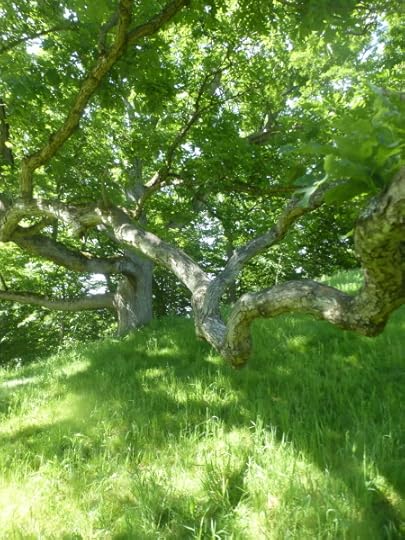
The library has only just started collecting alumnae papers, so I went to talk with the Archivist, and ended up having a long bookish conversation—all about Shakespeare folios and printing presses and typography and book thieves —with her and the head of the Conservation Lab, who teaches an enticing course on Papyrus to Print to Pixels. Why O why was that not taught when I was there? It would have paired so beautifully with my pet course on historical art techniques, in which I got to play with silverpoint and gold leaf and gesso and egg tempera.
Don’t these students do fine work?
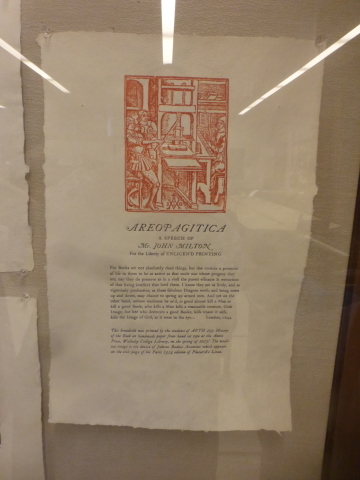
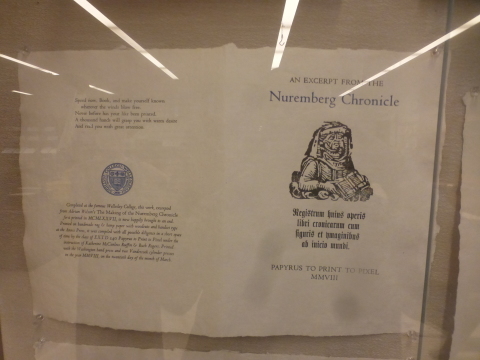
Heard a talk on the Great Fire of 1914, in which all, all was lost, the entire beyond-high-Victorian college building—classrooms, chapel, library, labs, student and faculty quarters, the beloved statue of Harriet Martineau*, and all. The blaze began, quite possibly, in a maiden lady professor's beetle-breeding tanks, kept tenderly warm by a jury-rigged stove. At least the janitor said that he’d told her and told her. The premises burned end to end in four hours. In the aftermath, Jordan Marsh and other Boston shops offered compassionate discounts on underlinens to the lady scholars. The college was up and running (in tents and sheds and lean-tos), three weeks later, and that year’s class graduated. One of the few relics to survive the fire is a mirror frame painted with all the wildflowers of Wellesley, as they were in 1880. Having seen that frame, I saw those flowers everywhere, renewed.
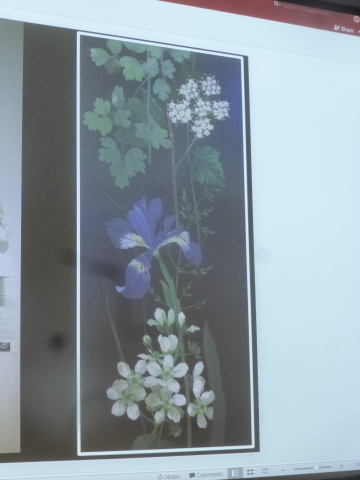
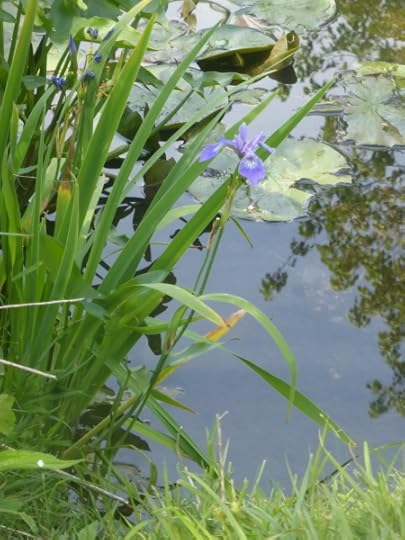

The conversations and conjunctions, jokes and reminiscences sprang green again throughout the weekend. At dinner, one of my silly sisters gave me a bag full of her late father’s well-used S. J. Perelman collection, nearly all in hardcover, and some with Hirschfeld illustrations that I’d never seen. Bliss! Glee! I only wish she’d found her dad’s 78 of Perelman reading “The Sweeter the Tooth, the Nearer the Couch.” Inimitable voice.
There still are spring peepers in the library fountain.
Nine
*They used to roll initiate freshmen up in rugs, and pass them under her chair. Some got stuck, poor things.
Dark, rich, and strange
My Jonsonian friend, the early modernist, essayist, and poet Catherine Rockwood has been writing an excellent series of blog posts on King Charles I and Speculative Fiction, and has some very nice things to say about my Exit, Pursued By a Bear. Earlier, Poul Andersen comes in for a lifted eyebrow: "You heard it from the lilacs first."
Nine
...and a little heap under the stairs
The Ben Davis, we are informed, "has all the charm of a croquet ball ... Excellent for selling to people who have never tried one before."
SweeTango: "suddenly you're standing there with a skinny core in your hand, looking for a wet wipe."
Orleans Reinette: "Think of it as the natural chewing gum of French children, circa 1800."
Karmijn de Sonnaville: "It's like a spherical margarita. ... Re-released as Hurt So Good, it would be unstoppable."
Esopus Spitzenberg: "My thirteen-year-old son said, "'Wow! Lychee soda!'"
Cox's Orange Pippin: "Its grandchildren include Gala, which is to Cox as Drew Barrymore is to John Barrymore."
Gala: "Hit it right, and Gala will deliver an unforgettable performance. Other times, it seems to be mailing it in, providing some light, sweet entertainment with no edge."
Hubbardston Nonesuch: "a touch of the proto-Red-Delicious to it, with that pentagonal shape, leathery hide, and Bazooka Joe flavor."
Blue Pearmain: "This is the apple Elrond would have tended in his backyard at Rivendell, and it would have been off-limits to any dwarf or hobbit."
Afterward, Eden was generous with the cider tasting: half glasses, not sips. There was Cinderella's Slipper in the Minerals Gallery (ooh, shiny!), Ezekiel (100% Kingston Black, "the perfect balance of sweet, tart, bitter, and savory saddle-sweat, like prosciutto") in Microbial Life, and a beautiful deep amber Heirloom Blend Ice Cider in—the Arthropods Gallery? An ordeal for arachnophobes. And that's where they put the very nice fruit and cheese and crackers. I kept examining my plate for cheese mites. Sadly, I still cannot taste apples in hard cider, or grapes in wine. They're all just ethanol to my palate. Or at most, sweet ethanol. I tried. What a pity.
The museum had opened the Glass Flowers for the occasion, with the gorgeously creepy display of diseased apples well to the fore. I love the many-times magnified mold, like a ghost forest.
Nine
Do machines have karma?
If they do what they are programmed to do, can their actions have intention? Will they be reborn as say, Patek Philippe wristwatches? As iPods? As plushies? Is that a degree toward sentient life?
Nine
ETA:
"In effect, these Aibos become organ donors – martyrs for the greater good of what is, alas, a dying breed.
"Before they go to robodog nirvana, however, A-Fun gives them a hero's farewell. In all, the company has sent off about 800 Aibos in this way, all from Kofukuji in Chiba Prefecture near Tokyo.
"'We'd like to return the souls to the owners and make the robot a machine to utilize their parts,' says A-Fun CEO Nobuyuki Norimatsu. 'We don't take parts before we hold a funeral for them.'
"Bungen Oi, the head priest at Kofukuji, who conducted the ceremony, says of the Aibos: 'All things have a bit of soul.'"
Heavens
![[personal profile]](https://i.gr-assets.com/images/S/compressed.photo.goodreads.com/hostedimages/1529013604i/25783244.png) negothick
, helpful as ever, said she had a copy on her phone (that'll be the day!), and offered that. And it all devolved into one of those exam dreams where you haven't read the book. As I woke, I realized, wait, I haven't read it the book because I haven't yet written it.
negothick
, helpful as ever, said she had a copy on her phone (that'll be the day!), and offered that. And it all devolved into one of those exam dreams where you haven't read the book. As I woke, I realized, wait, I haven't read it the book because I haven't yet written it. Had a perfectly lovely afternoon with
![[personal profile]](https://i.gr-assets.com/images/S/compressed.photo.goodreads.com/hostedimages/1529013604i/25783244.png) rushthatspeaks
at the Gardner, gazing at Fra Angelicos. Exquisite! Heavenly lapis and etched gold. Rush pointed out the handling of time in a strip of panels, showing Saints Cosmas and Damien failing to be martyred in a number of ingenious ways: the arrows bending back in mid-air; the bodies, plunging side by side into a river, upturned like a couple of handbells; and at last, the halos rolling away, with the heads still on them. We had a most elegant tea at the museum, with tapenade on crostini, and slices of a beautifully airy parsnip cake with rhubarb sorbet and nasturtium ice cream, flowers and all.
rushthatspeaks
at the Gardner, gazing at Fra Angelicos. Exquisite! Heavenly lapis and etched gold. Rush pointed out the handling of time in a strip of panels, showing Saints Cosmas and Damien failing to be martyred in a number of ingenious ways: the arrows bending back in mid-air; the bodies, plunging side by side into a river, upturned like a couple of handbells; and at last, the halos rolling away, with the heads still on them. We had a most elegant tea at the museum, with tapenade on crostini, and slices of a beautifully airy parsnip cake with rhubarb sorbet and nasturtium ice cream, flowers and all.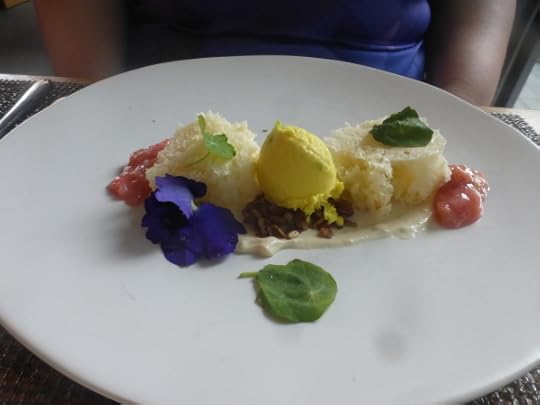
Nine
April 26, 2018
Fire down below
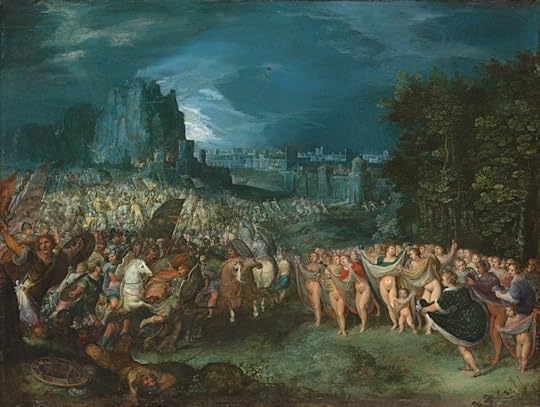
Whee!
It's called "The bravery of the Persian women." The story is taken from Plutarch's Moralia V:
"Cyrus, causing the Persians to revolt from King Astyages and the Medes, was overcome in battle; and the Persians retreating by flight into the city, the enemy pursued so close that they had almost fallen into the city with them. The women ran out to meet them before the city, plucking up their petticoats to their middle, saying, Ye vilest varlets among men, whither so fast? Ye surely cannot find a refuge in these parts, from whence ye came forth."
Closed.
They're not just handing out white feathers, of course: they were looking at a siege at best, with famine and disease; at worst, rape, slaughter, and enslavement. Fortunately, the smock-lifting worked.
"The Persians blushing for shame at the sight and speech, and rebuking themselves, faced about, and renewing the fight routed their enemies. Hence a law was enacted, that when the king enters the city, every woman should receive a piece of gold; and this law Cyrus made. And they say that Ochus, being in other kinds a naughty and covetous king, would always, when he came, compass the city and not enter it, and so deprive the women of their largess; but Alexander entered twice, and gave all the women with child a double benevolence."
Francken, I discover, was in awe (not unmingled with prurience, alas) of women's power. Even when he's making sermons, he's thunderstruck. He painted some spectacular witches' kitchens and sabbaths, where, in spite of the whizzbangs and the flesh, they're all hard at work, studying wickedness. This scene resembles nothing so much as a dark, chaotic colloquium. Science camp for the black arts.
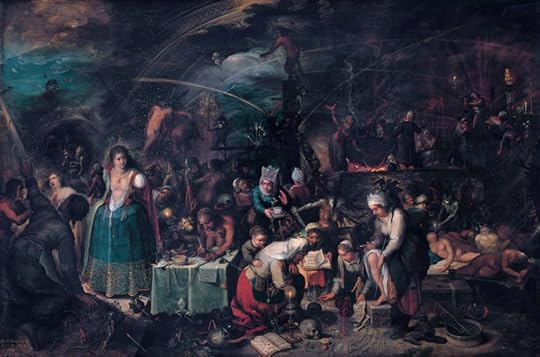
And (I suddenly realized), Francken painted that recent acquisition at the MFA, one of the gleefullest Hells in the history of art.
Nine
April 23, 2018
Greer Gilman's Blog
- Greer Gilman's profile
- 42 followers


